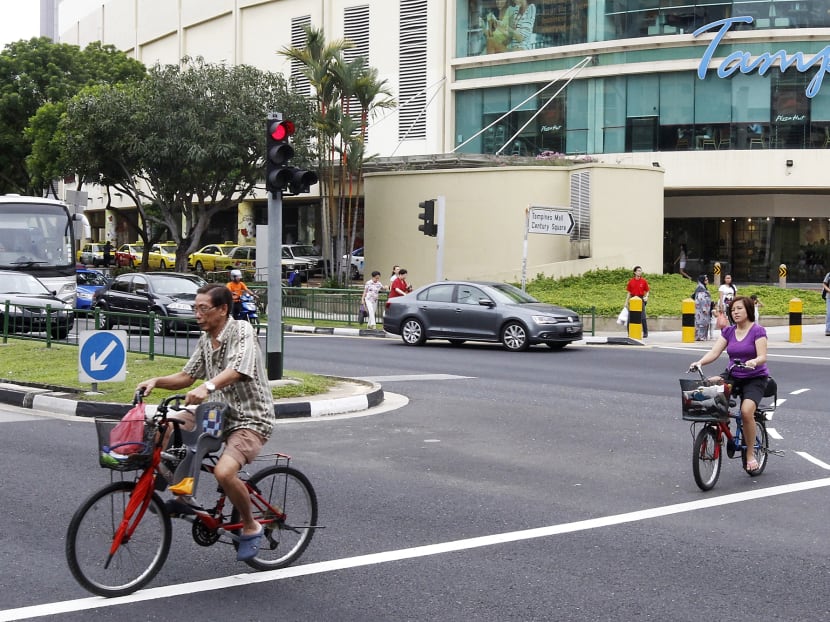Study recommends combining cycling with public transport in S’pore
SINGAPORE — The hot weather may put off many from using the bicycle as a means of commuting, but it is possible to cycle in comfort even in the Republic’s tropical climate.
SINGAPORE — The hot weather may put off many from using the bicycle as a means of commuting, but it is possible to cycle in comfort even in the Republic’s tropical climate.
That is the view of Danish architect and urban design consultant Jan Gehl, one of those involved in a research project to make Singapore a more pedestrian- and bike-friendly city. The project’s initial findings were released at a press conference yesterday.
Mr Gehl said cycling here can be done across shorter distances before transferring to public transport.
“We are not going to talk about cycling over 10km or 15km or for one hour (at) high speed. We are going to talk about small trips of 1km or 2km, to the station especially, to the shops, the doctor, the library and school — and so that will be local biking,” he told reporters later.
Earlier, a Memorandum of Understanding was also renewed between two organisations involved in the project — the Urban Land Institute, a global non-profit education and research institute, and the Centre for Liveable Cities (CLC), a Singapore think-tank.
The project’s initial recommendations included integrating walking and cycling infrastructure with public transit, making cycling comfortable and attractive through street planting and sheltered walkways, as well as providing end-of-trip amenities such as bike parking, showers and laundromats at workplaces.
The full report is expected to be released later this year.
Earlier in March, two research workshops were organised, with one taking participants to Ang Mo Kio — a selected study area — to understand the issues faced by pedestrians and cyclists.
Speaking to reporters on the sidelines of the event, CLC director Limin Hee said some of the observations made from the Ang Mo Kio case study found that the area had many overhead bridges, which could be converted to at-grade crossings — crossings at the same level — to be more pedestrian- and bike-friendly. Similarly, the area was shaded and had paths that were wide enough to include protected bike lanes.
These observations may be applicable to the new towns, she noted, where it is not difficult to implement such protected bicycle lanes and more at-grade crossings, for instance.
When asked about current efforts to make Singapore more bike-friendly, Dr Hee said the authorities had done an “excellent job” with the park connectors.
“What we do need to do is to provide linkages to the park connectors system and, perhaps, think of a way that we can make our cycling infrastructure more consistent so that people understand the rules and know how to use these better,” she said.
Mindsets also have to change, Dr Hee added, as some Singaporeans regard cycling as a less desirable form of travelling than driving a car.







